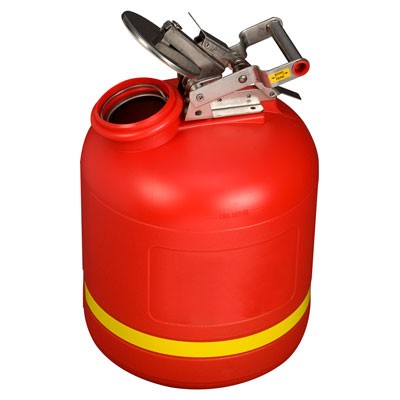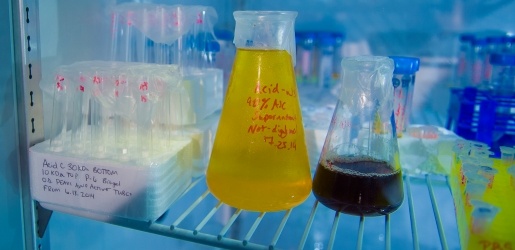Specialist Liquid Waste Removal Melbourne: Quick and Inexpensive Providers
Wiki Article
How Fluid Garbage Disposal Functions: An In-depth Introduction of Strategies and Technologies Used

Introduction of Liquid Waste Types
The intricacy of liquid waste kinds demands a complete understanding of their characteristics and ramifications for disposal. Fluid waste can generally be categorized into numerous kinds, consisting of commercial, municipal, agricultural, and contaminated materials. Each category displays distinctive homes, needing particular administration approaches to reduce environmental and health and wellness risks.
Industrial liquid waste originates from producing processes and frequently includes a variety of contaminants, such as hefty steels, solvents, and natural compounds. Metropolitan fluid waste, primarily comprising wastewater from families and industrial establishments, includes organic matter, nutrients, and pathogens (industrial wastewater treatment). Agricultural fluid waste, including overflow from farms, might contain fertilizers, pesticides, and pet waste, posturing threats to water top quality and communities
Harmful fluid waste is characterized by its toxicity, sensitivity, or prospective to create harm. This category consists of materials like acids, bases, and specific chemicals that demand rigorous handling and disposal procedures. Comprehending these varied fluid waste kinds is important for creating effective disposal approaches and guaranteeing conformity with ecological guidelines. Proper classification and characterization are necessary for carrying out suitable treatment techniques and decreasing the negative effect on public wellness and the setting.
Physical Treatment Approaches

Testing is the initial action, where bigger particles and debris are removed from the liquid waste utilizing screens or grates. This procedure shields downstream equipment from damages and ensures smoother procedure. Following testing, sedimentation makes use of gravitational pressure to different solids from fluids. In sedimentation containers, heavier fragments settle near the bottom, forming a sludge layer, while the made clear fluid can be further dealt with.
Filtering is one more important approach that entails passing the fluid with porous materials, such as sand or membrane layers, to catch smaller sized bits. This action enhances the top quality of the liquid, making it suitable for subsequent therapy processes.

Chemical Treatment Methods
Chemical therapy strategies are crucial for effectively managing liquid waste, especially in dealing with liquified and colloidal impurities that physical approaches might not properly eliminate. These methods utilize various chemical representatives to counteract, speed up, or change harmful materials right into much less dangerous types.One typical technique is coagulation and flocculation, where chemicals such as alum or ferric chloride are contributed to promote the aggregation of suspended particles. This procedure enhances sedimentation, enabling for less complicated removal of the resulting sludge. In addition, oxidation procedures, utilizing representatives like chlorine or ozone, are employed to break down complicated natural substances and virus, providing the waste much safer for discharge or more treatment.
Neutralization is another important technique, which changes the pH of acidic or alkaline waste streams to neutral levels, avoiding possible damage to downstream systems and the environment. Moreover, advanced oxidation procedures (AOPs) make use of mixes of oxidants and ultraviolet light to degrade persistent contaminants, attaining a higher level of therapy efficiency.
Biological Treatment Processes
Organic treatment procedures play a crucial duty in the administration of fluid waste by making use of microbes to decompose raw material and decrease pollutant levels. These procedures can be extensively classified into aerobic and anaerobic therapies, each using particular microbial communities to achieve effective waste deterioration.Cardio treatment involves the usage of oxygen to assist in the break down of natural materials by microorganisms. This procedure is frequently carried out in turned on sludge systems, where oygenation storage tanks supply a helpful setting for microbial growth, resulting in the oxidation of natural contaminants. The resultant biomass can be divided from treated effluent via sedimentation.
In contrast, anaerobic therapy occurs in the absence of oxygen, counting on various bacteria to break down raw material. This approach is specifically beneficial for high-strength waste, as it produces biogas, a sustainable power source, while minimizing sludge manufacturing. Technologies such as anaerobic digesters are often employed in industrial and community applications.
Both anaerobic and cardio biological treatments not just decrease the ecological effect of fluid waste yet also help with source recuperation, making them vital parts of lasting waste monitoring strategies. Their efficiency, performance, and versatility support their widespread execution across numerous markets.
Emerging Technologies in Disposal
Cutting-edge strategies to liquid garbage disposal are quickly developing, driven by advancements in technology and a raising focus on sustainability. Amongst these emerging technologies, membrane bioreactors (MBRs) have acquired traction for their capacity to integrate organic treatment with membrane layer purification, causing top notch effluent that can be reused in numerous applications. MBRs enable smaller footprints and extra reliable procedures compared to conventional systems.One more appealing development is the use of anaerobic food digestion combined with nutrient recovery technologies, which not only deals with liquid waste but additionally generates biogas and recoups beneficial nutrients like nitrogen and phosphorus. This dual benefit boosts source effectiveness and lowers ecological effect.
Furthermore, advanced oxidation processes (AOPs) are being taken on for the degradation of intricate organic toxins. These approaches make use of powerful oxidants and stimulants to break down pollutants at the molecular level, supplying an extremely reliable service for challenging waste streams.
Moreover, the combination of expert system and equipment understanding in waste administration systems is optimizing liquid waste disposal functional effectiveness and anticipating upkeep, resulting in decreased costs and improved environmental conformity. These modern technologies reflect a considerable shift towards more efficient and sustainable fluid garbage disposal practices.
Conclusion
In final thought, reliable fluid waste disposal demands an extensive understanding of different methods and innovations. By constantly progressing these techniques, it comes to be feasible to attend to the expanding difficulties associated with fluid waste, inevitably contributing to environmental security and resource recuperation.Fluid waste disposal is an important aspect of environmental monitoring, calling for a thorough understanding of different strategies and technologies customized to various waste types. Liquid waste can generally be classified into numerous types, consisting of industrial, metropolitan, agricultural, and unsafe waste. Agricultural fluid waste, including overflow from farms, may contain plant foods, pesticides, and pet waste, posing dangers to water quality and ecosystems.
Different physical therapy techniques play a crucial duty in managing liquid waste properly - industrial wastewater treatment.In verdict, reliable fluid waste disposal requires a comprehensive understanding of different strategies and innovations
Report this wiki page